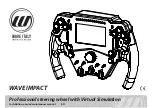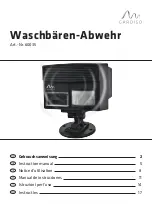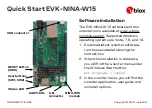
Do-more T1H Series PLC User Manual, 1st Edition, Rev. C
A-2
Appendix A: European Union Directives (CE)
European Union (EU) Directives
NOTE:
The information contained in this section is intended as a guideline and is based on our interpretation
of the various standards and requirements. Since the actual standards are issued by other parties, and in
some cases governmental agencies, the requirements can change over time without advance warning or
notice. Changes or additions to the standards can possibly invalidate any part of the information provided
in this section.
This area of certification and approval is absolutely vital to anyone who wants to do business
in Europe. One of the key tasks that faced the EU member countries and the European
Economic Area (EEA) was the requirement to bring several similar yet distinct standards
together into one common standard for all members. The primary purpose of a single
standard was to make it easier to sell and transport goods between the various countries and
to maintain a safe working and living environment. The Directives that resulted from this
merging of standards are now legal requirements for doing business in Europe. Products that
meet these Directives are required to have a CE mark to signify compliance.
Member Countries
As of January 1, 2015, the members of the EU are Austria, Belgium, Bulgaria, Croatia,
Republic of Cyprus, Czech Republic, Denmark, Estonia, Finland, France, Germany, Greece,
Hungary, Ireland, Italy, Latvia, Lithuania, Luxembourg, Malta, Netherlands, Poland,
Portugal, Romania, Slovakia, Slovenia, Spain, Sweden, and United Kingdom. Iceland,
Liechtenstein, and Norway together with the EU members make up the European Economic
Area (EEA) and all are covered by the Directives.
Applicable Directives
There are several Directives that apply to our products. Directives may be amended, or
added, as required.
•
Electromagnetic Compatibility Directive (EMC)
— this Directive attempts to ensure that
devices, equipment, and systems have the ability to function satisfactorily in an electromagnetic
environment without introducing intolerable electromagnetic disturbance to anything in that
environment.
•
Machinery Safety Directive
— this Directive covers the safety aspects of the equipment,
installation, etc. There are several areas involved, including testing standards covering both
electrical noise immunity and noise generation.
•
Low Voltage Directive (LVD)
— this Directive is also safety related and covers electrical
equipment that has voltage ranges of 50–1000VAC and/or 75–1500VDC.
•
Battery Directive
— this Directive covers the production, recycling, and disposal of batteries.
Compliance
Certain standards within each Directive already require mandatory compliance. The EMC
Directive, which has gained the most attention, became mandatory as of January 1, 1996.
The Low Voltage Directive became mandatory as of January 1, 1997.
Ultimately, we are all responsible for our various pieces of the puzzle. As manufacturers, we
must test our products and document any test results and/or installation procedures that are
necessary to comply with the Directives. As an end user, you are responsible for installing
the products applying “good engineering practices” and in a manner which will ensure
compliance is maintained.









































